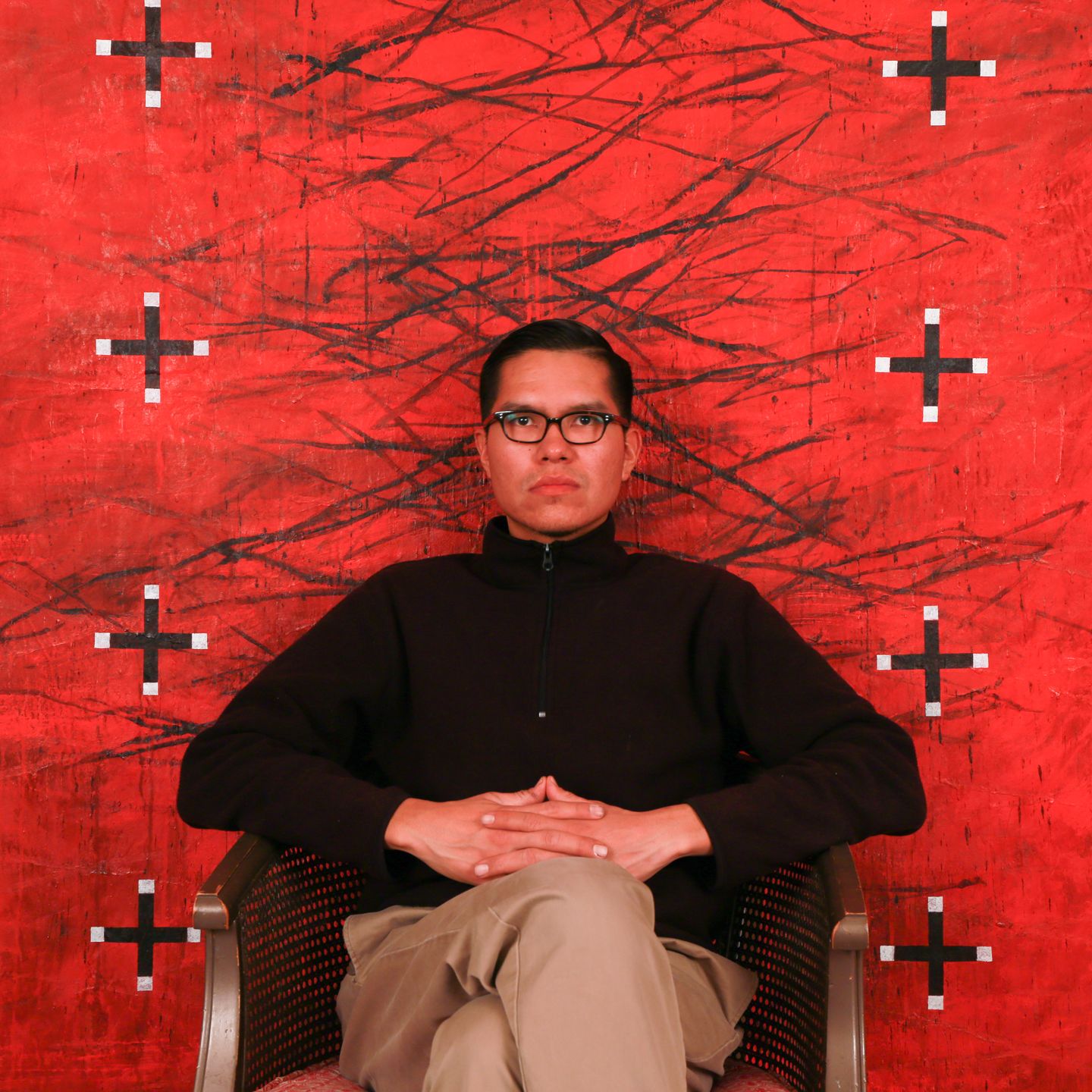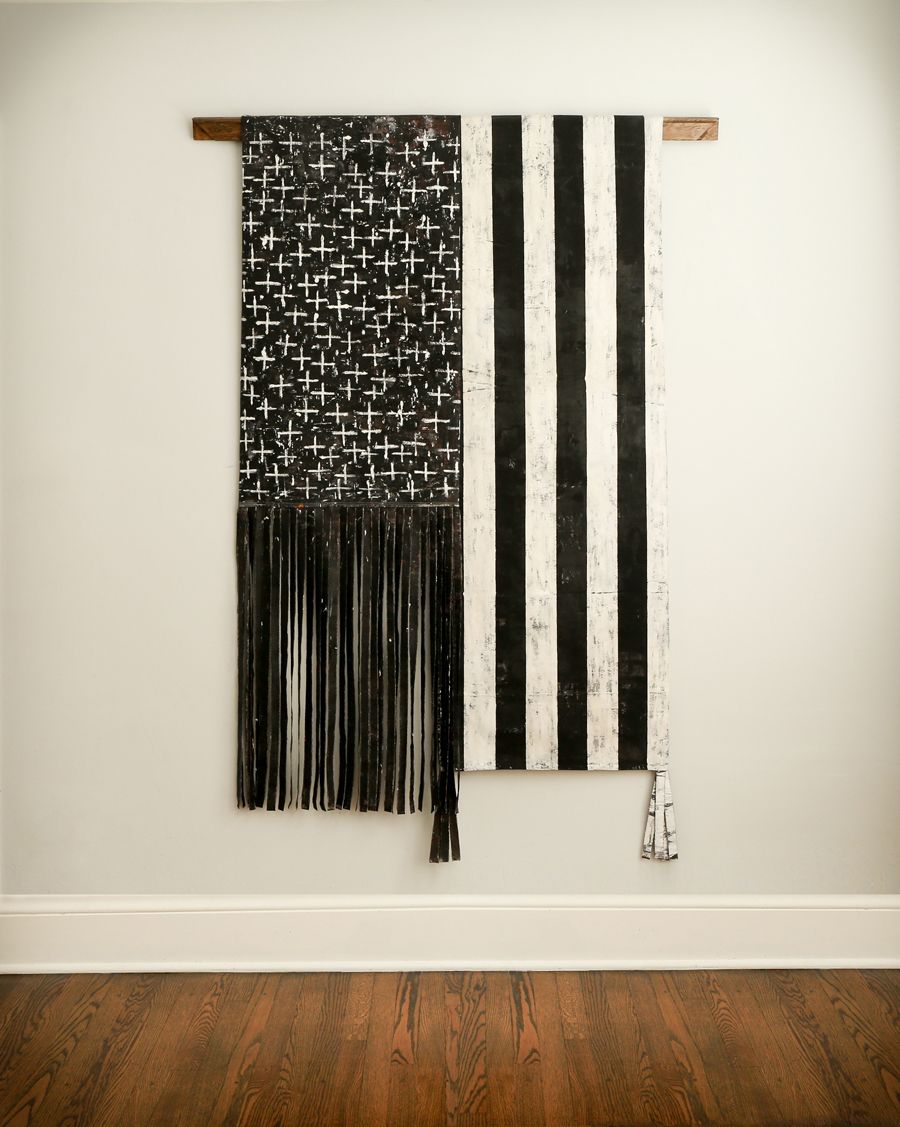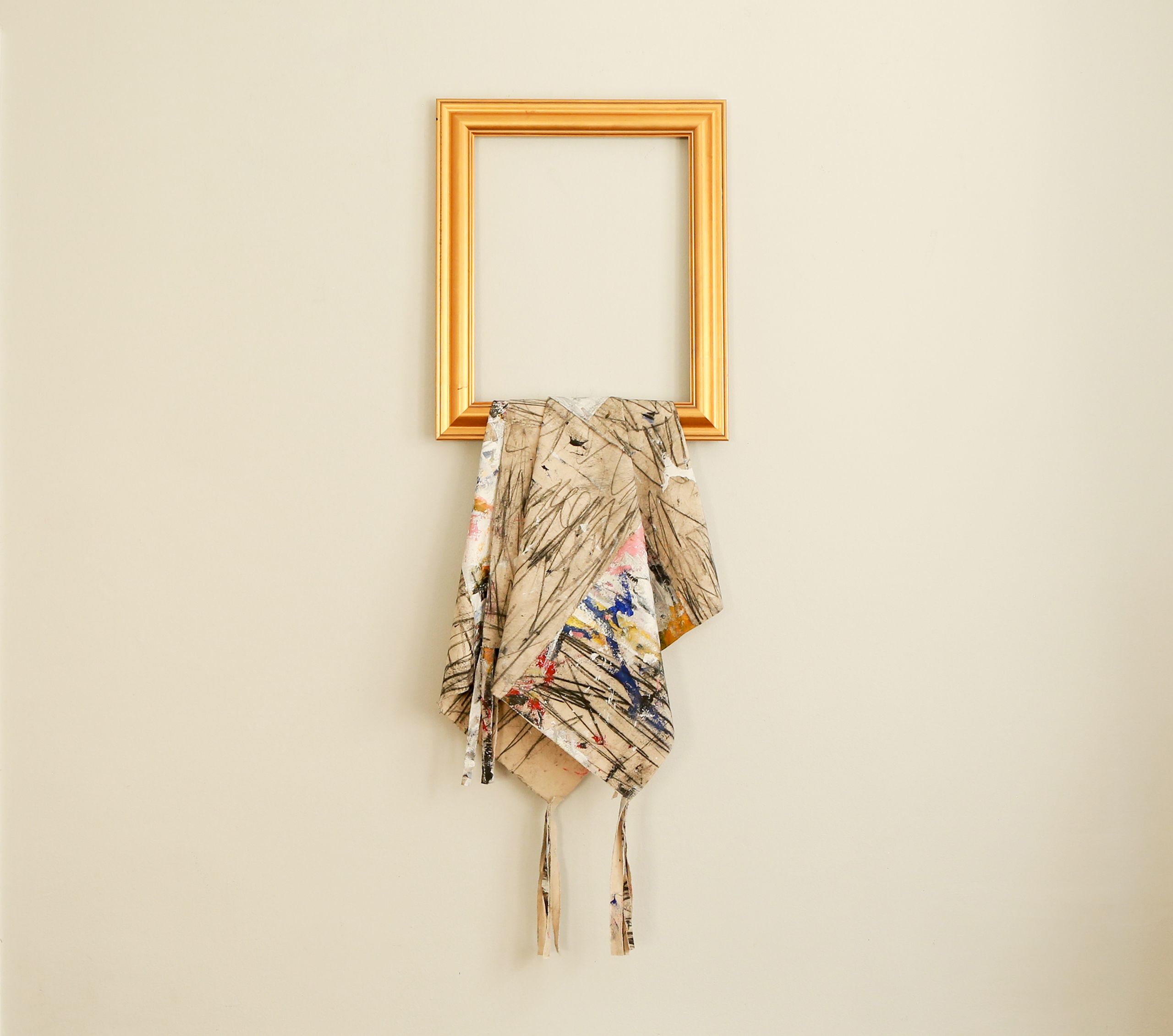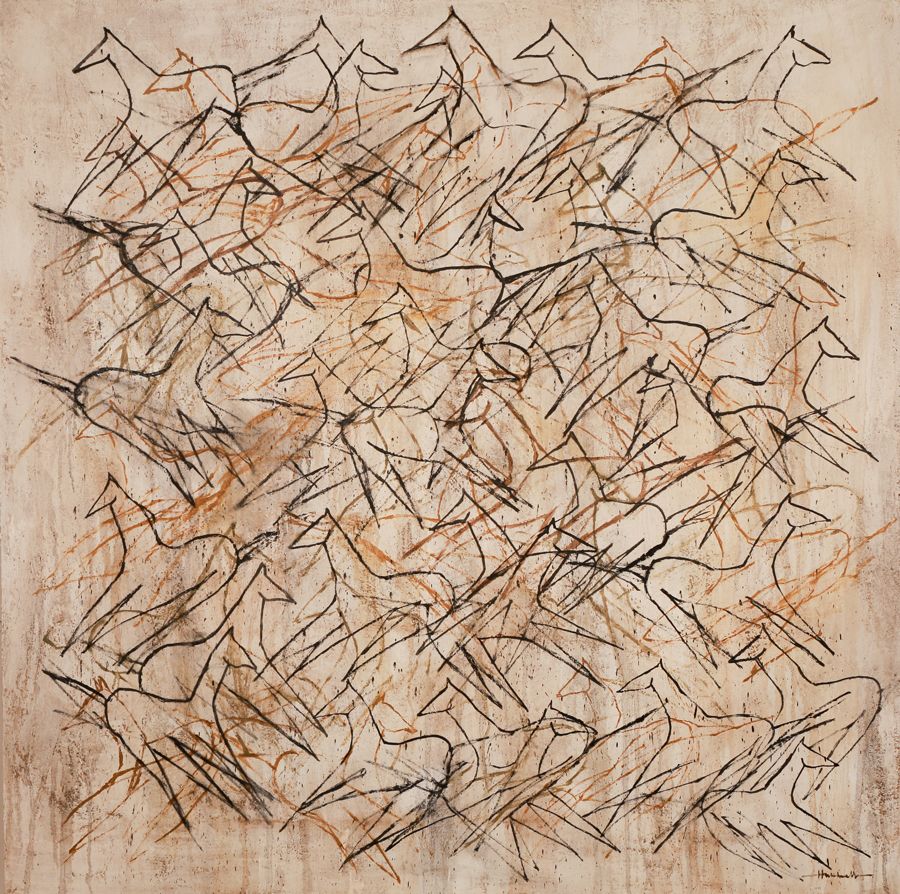How Alum Patrick Hubbell Is Deconstructing Western Art

by Brontë Mansfield (MA 2017)
Some people falsely assume that Native American art is a thing of the past.
For years, you were more likely to find Native art in a natural history museum than an art gallery, displayed among dioramas, fading wall labels, and low-lit plinths. This is how artist Patrick Hubbell (MFA 2021) first encountered Native art outside his home on the Navajo Nation, on a school field trip to a museum in Phoenix, Arizona. “Definitely the white wall, white cube, anthropological presentation of Native American-as-artifact,” Hubbell remembered. “Coming from my home and my cultural tradition, it’s different seeing it in that kind of a state of presentation or display.”
Growing up, Hubbell was raised in a traditional Navajo lifestyle: small-scale ranching of horses and cattle and a family who instilled Diné traditional cultural philosophy and teachings. Hubbell went to college at Arizona State University to earn his bachelor’s in studio art in 2010.
“It wasn’t until then I was really exposed to a lot of contemporary art and practice, theory, or art history,” he explained. “Comparing myself to the different people that come from cities and are exposed to museums at a young age, I feel like I wasn’t really exposed to that kind of art on a grand scale until my college years.”

Patrick Hubbell, HONORING OUR FOREMOTHERS, oil, acrylic, oil stick, pigment, dispersion, synthetic polymer, charcoal, natural earth pigment on canvas, and mounted wood frame, 62 x 52 x 3 inches
Patrick Hubbell, HONORING OUR FOREMOTHERS, oil, acrylic, oil stick, pigment, dispersion, synthetic polymer, charcoal, natural earth pigment on canvas, and mounted wood frame, 62 x 52 x 3 inches
It is this blend of Diné cultural practices and ways of making, combined with a fresh perspective on so-called Western art history, that permeates Hubbell’s work. After 10 years as a full-time working artist, during which he exhibited widely and received a grant from the Pollock-Krasner Foundation, Hubbell was awarded the New Artist Society Award to pursue his master’s in fine art at the School of the Art Institute of Chicago (SAIC).
“I wanted to start to pursue deconstructing Western formats of painting,” Hubbell said, referencing the way much of Western art is built from stretched canvas and two-dimensional representation.
In Hubbell’s recent works like A Portrait of Your Spiritual Movement, the artist covers canvas with a mix of oil and acrylic paints alongside smudges of charcoal and strokes of pigments made from earth. Hubbell manipulates canvas into different shapes, draping the works or cutting a fringe into the fabric, or pouring the canvas from the bounds of a “traditional” rectangular gilded frame.

Patrick Hubbell, A PORTRAIT OF YOUR SPIRITUAL MOVEMENT, oil, acrylic, oil stick, pigment, dispersion, synthetic polymer, charcoal, natural earth pigment on canvas, and mounted frame, 80 x 21 x 3 inches
Patrick Hubbell, A PORTRAIT OF YOUR SPIRITUAL MOVEMENT, oil, acrylic, oil stick, pigment, dispersion, synthetic polymer, charcoal, natural earth pigment on canvas, and mounted frame, 80 x 21 x 3 inches
Hubbell is “looking at the canvas as fiber and relating it to my own understanding of textiles and weavings and blankets ... exploring abstract geometric design and the symbology behind our stories and songs—and the way that we use those design elements within Indigenous art.”
Where Hubbell struggled in the arts community of Chicago was realizing that many of his friends and peers had little understanding of Native American peoples and cultures. “My friends had never been exposed to all the variations and the differences between all our Indigenous nations. A lot of my conversations that I was having were saying like, You know it’s just not one. There are 574 federally recognized tribes, and we’re all totally different. We have our language, our customs.”
“It’s always been a fluid, interdependent process for me that my own personal life is reflected through my art practice.”
Seeing Native art only in the context of a natural history museum tricks the public into thinking that Indigenous peoples are also only a part of the past. It flattens Native cultures into a bygone monolith. Now, Native artists like Hubbell are challenging that narrative, pulling Native art out from behind plexiglass displays and into the contemporary gallery space—and insisting that Native art is also the future.

Patrick Hubbell, Equus Movement, oil on canvas, 48 x 48 inches
Patrick Hubbell, Equus Movement, oil on canvas, 48 x 48 inches
In 2021, Hubbell graduated from SAIC amidst the COVID-19 pandemic, receiving the James Nelson Raymond Fellowship for graduating MFA candidates. This year, he has a solo exhibition at the Gerald Peters gallery in New York titled The Nature of You. He recently returned to his homelands near the Arizona–New Mexico border with his wife and two children. “My career, I feel like, is going to continue to grow,” he said, growing alongside “my own personal goals of raising my family around the Navajo Nation, around some of these cultural life ways, which are important to us, really working on that as a family and incorporating that into my art practice. It’s always been a fluid, interdependent process for me that my own personal life is reflected through my art practice and I feel that—as I grow with my family—my art practice will reflect that, and it will grow along with me.”
For information on SAIC's ongoing land acknowledgment process, click here. ■

